|
|
 |
CAVAROZZI, Bartolomeo
|
|
Italian painter, Roman school (b. ca. 1590, Viterbo, d. 1625, Roma).
Italian painter, active also in Spain. His formative years were spent in Rome, where he went as a boy and where his first teacher was the Viterbese painter Tarquinio Ligustri. Through Ligustri he became acquainted with the aristocratic Roman family headed by the Marchese Virgilio Crescenzi (d 1592) and eventually lived with them in their home near the Pantheon and studied at Giovanni Battista Crescenzi's academy of art. |
|
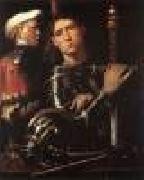 |
CAVAZZOLA
|
|
(b. ca. 1486, Verona, d. 1522, Verona)
Italian painter
Italian painter..was an Italian painter of the Renaissance, active mainly in his hometown of Verona. He appears to have been a pupil of one of the brothers Morone, likely Francesco Morone |
|
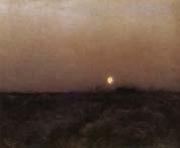 |
Cazin Jean-Charles
|
|
French landscapes painter and ceramist , 1841-Le Lavandou 1901
Painter and ceramicist. His earliest paintings reveal close affinities with the realist tradition, while his later compositions (mostly landscapes of northern France) demonstrate an awareness of Impressionism and a commitment to recording the changing effects of light and atmosphere. He was sent to England for health reasons but by 1862 or 1863 was living in Paris and active in avant-garde artistic circles. |
|
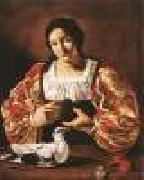 |
CECCO DEL CARAVAGGIO
|
|
Italian Baroque Era Painter, active ca.1610-1620
Painter active in Italy. His nationality is not known. He was a follower of Caravaggio, and his rare works reveal a highly original and idiosyncratic response to that artist's naturalism. Agostino Tassi mentioned him as involved, with several French artists, in the decoration of the Villa Lante at Bagnaia between 1613 and 1615, |
|
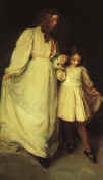 |
Cecelia Beaux
|
|
1824-1900
William Holbrook Beard Gallery
Beard was born in Painesville, Ohio. He studied abroad, and in 1861 moved to New York City, where in 1862 he became a member of the National Academy of Design.
He was a prolific worker and a man of much inventiveness and originality, though of modest artistic endowment. His humorous treatment of bears, cats, dogs, horses and monkeys, generally with some human occupation and expression, usually satirical, gave him a great vogue at one time, and his pictures were largely reproduced.
His brother, James Henry Beard (1814-1893), was also a painter. |
|
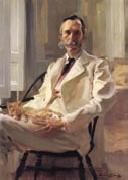 |
Cecilia Beaux
|
|
American figure and portrait painter , 1855-1942
American painter. She began her career painting on porcelain and producing lithographs and portrait drawings. She studied with Catharine Ann Drinker (1871), Francis Adolf van der Wielen (1872-3) and Camille Piton (1879), at the Pennsylvania Academy of the Fine Arts in Philadelphia (1877-8), and privately with William Sartain (1881-3). Under Sartain's guidance, she learnt to paint, producing her first major portrait, the Last Days of Infancy |
|
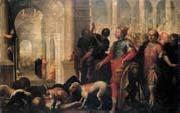 |
CELESTI, Andrea
|
|
Italian painter, Venetian school b. 1637, Venezia, d. 1712, Venezia,Italian painter. He trained first with Matteo Ponzoni, then with Sebastiano Mazzoni; Mazzoni encouraged the development of a Baroque style, but Celesti was also attracted by the naturalism of the tenebrists. The first known works by Celesti are mature in style, and he had already achieved considerable fame in Venice when the Doge Alvise Contarini honoured him with the title of Cavaliere in 1681. The complexity of his sources is evident in two canvases, Moses Destroying the Golden Calf and Moses Chastising the Hebrew People for their Idolatry, both painted c. 1681 for the Palazzo Ducale, Venice, and signed Cavaliere; they are influenced by Luca Giordano and by the narrative techniques of Jacopo Tintoretto. The most distinguished works of Celesti's early period are two large lunettes that show three scenes: Benedict III Visiting St Zacharias, A Doge Presented with the Body of a Saint, and the Virtues Surrounding a Doge Holding the Model of St Zacharias (c. 1684; Venice, S Zaccaria). These luxuriant compositions represent a remarkable leap in quality from the paintings of the Palazzo Ducale, with lighter colours and a more flickering touch. A little later Celesti left Venice for Brescia, perhaps by way of Rovigo; exactly when he arrived is not known, but he established himself and his studio there for several years. Panfilo Nuvolone and Francesco Paglia (1636-1713) had encouraged the development of a more exuberant Baroque style in Brescia, and in response Celesti created more decorative, lyrical works, such as his ecstatic St Rose of Lima (Brescia, S Clemente) with its brilliant display of glorious light. Most of Celesti's paintings done in and around Brescia were religious canvases, but he also painted portraits, such as the two entitled Condottiero (Ljubljana, Slov. Acad. Sci. & A.) and the portrait of Conte Alberto di Baone (Dublin, N.G.), executed in a dazzling array of colours. In 1688 Celesti was active at Toscolano on Lake Garda, where he painted canvases of scenes from the Life of St Peter (Toscolano Cathedral) and in 1689 decorated the salone of the Palazzo Delay (now Palazzo Mafizzoli) with Old Testament scenes. In 1696 he was at Treviso, where he executed a Last Judgement for the cathedral (untraced) and in 1697, 1698 and 1699 pictures for the abbey of S Floriano at Linz, where his Paradise, for the high altar, remains in situ. By 1700 Celesti was back in Venice, where he set up his studio; Venetian artists of this period, led by Giovanni Coli and Filippo Gherardi, were reviving the style of Veronese, and Celesti, following this trend, produced late works that employed more dazzling effects of colour and light. These works include the frescoed decoration of the Villa Rinaldi Barbini at Casella d'Asolo, where Celesti created a series of exotic and theatrical mythological and biblical scenes, distinguished by their luminosity and by their light and airy touch. His last works were three dramatic night scenes: the Birth of the Virgin, the Assumption of the Virgin and the Martyrdom of St Lawrence (1706-11; Verolanuova Cathedral). Celesti was much admired by Charles-Nicholas Cochin (i) and by Jean-Honor? Fragonard, and his colour influenced the Rococo art of the early 18th century in Venice and in Austria. |
|
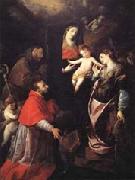 |
Cerano
|
|
(1557/1633) Cerano (Novara), Painter/ Sculptor |
|
 |
CEREZO, Mateo
|
|
Spanish painter (b. ca. 1626, Burgos, d. 1666, Madrid) |
|
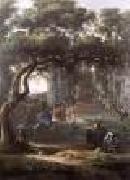 |
CERQUOZZI, Michelangelo
|
|
Italian Baroque Era Painter, ca.1602-1660
Italian painter. He was a painter of bambocciate (low-life subjects), battles, small religious and mythological works and still-lifes. He was born of Roman parents, baptized in the parish of S Lorenzo in Lucina and spent his entire life in his native city. A member of the Accademia di S Luca since 1634, Cerquozzi attended meetings of the society as late as 1652. His friends included Domenico Viola, Pietro da Cortona and Giacinto Brandi. More significant were his associations with foreign residents in Rome. According to Baldinucci, Cerquozzi had special affection for the Spanish, owing to the patronage he received from the major-domo of the Spanish Embassy as a youth, and would often don Spanish attire as a sign of his sentiment. His Spanish connections may partly account for the many commissions he later received from patrons identified with Rome's pro-Spanish political faction (Haskell). Cerquozzi enjoyed equally good rapport with northern European residents of Rome. He is documented as having quartered with artists from beyond the Alps, including Paulus Bor and Cornelis Bloemaert, for the bulk of his career. |
|
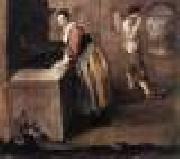 |
CERUTI, Giacomo
|
|
Italian Painter, 1698-1767
Italian painter. He was one of a group of artists working in Bergamo and Brescia who observed reality with an unusual freshness and directness. He painted religious subjects and portraits but was most distinguished as a painter of genre and low-life scenes. These included many pictures of beggars and vagabonds ( pitocchi), hence his nickname 'il Pitocchetto'. He married in Milan in 1717 but settled in Brescia in 1721. In 1723 he received a horse in payment for three altarpieces and four frescoes for the parish church of Rino di Sonico; they were mediocre works executed in an unadventurous blend of Lombard and Venetian traditions derived from contemporary Venetian painters working in Brescia. Ceruti's early portraits and genre scenes are less conventional and more intensely felt; in 1724 he signed and dated the strikingly naturalistic portrait of Giovanni Maria Fenaroli |
|
|
|
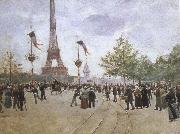 |
cesar franck
|
|
For playwright Frances Burney (1776 C 1828), niece of novelist Fanny Burney Madame d'Arblay 1752-1840, see Frances Burney (1776?C1828)
|
|
|
|
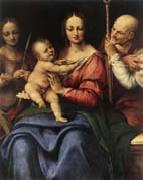 |
Cesare da Sesto
|
|
Italian High Renaissance Painter, 1477-1523, He was an Italian painter of the Renaissance active in Milan and elsewhere in Italy. He was born in Sesto Calende, Lombardy. He is considered one of the Leonardeschi or artists influenced by Leonardo da Vinci, such as Bernardino Luini and Marco D'Oggione. He may have trained or worked with Baldassare Peruzzi in Rome in 1505. Of this period, a lunette in Sant'Onofrio and some paintings in Campagnano Romano are attributed to him. From 1514 he soujourned in Naples for six years. In 1515 he finished a monumental polyptych for the Abbey of Santissima Trinita at Cava de' Tirreni. Back in Milan, he executed a Baptism of Christ, in collaboration with Bernardino Bernazzano (now lost) and a Salome, acquired by Rudolf II and now at the Kunsthistorisches Museum of Vienna. |
|
|
|
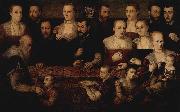 |
Cesare Vecellio
|
|
(c. 1530 - c. 1601) was an Italian painter and engraver of the Renaissance, active in Venice.
He was the cousin of the painter Titian. Like Titian, he was born at Cadore in the Veneto. He accompanied Titian to Augsburg in 1548, and seems to have worked as his assistant. Many of Cesare's pictures were ascribed, perhaps knowingly, to Titian. In the Milan Pinacoteca there is a small Trinity by Cesare. He died at Venice. The woodcuts for the contemporary fashion book, De gli Habiti Antichi e Moderni di Diversi Parti di Mondo published in Venice in 1590 by Cesare, in large may belong to Christopher Krieger from Nuremberg. Cesare also published a book of prints depicting the jewels of royal crowns, titled Corona delle nobili e virtuose donne (1591).
Cesare's brother, Fabrizio di Cadore or Ettore, was little known beyond his native place, for the Council-hall of which he is said to have painted a fine picture. He died in 1580.
|
|
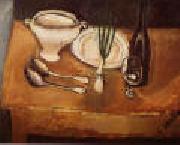 |
Chaim Soutine
|
|
Chaim Soutine Art Locations
Lithuanian 1893-1943
Soutine was born in Smilavichy near Minsk, Belarus (then part of the Russian Empire). He was the tenth of eleven children.
From 1910?C1913 he studied in Vilnius at the Vilna Academy of Fine Arts. In 1913, with his friends Pinchus Kremegne and Michel Kikoine, he emigrated to Paris, where he studied at the Ecole des Beaux-Arts under Fernand Cormon. He soon developed a highly personal vision and painting technique.
For a time, he and his friends lived at La Ruche, a residence for struggling artists in Montparnasse, where he became friends with Amedeo Modigliani. Modigliani painted Soutine's portrait several times, most famously in 1917, on a door of an apartment belonging to Leopold Zborowski, who was their art dealer. Zoborowski supported Soutine through the World War I, taking the struggling artist with him to Nice to escape the German bombing of Paris.
In 1923, the American collector Albert C. Barnes visited his studio and immediately bought sixty of Soutine's paintings.
Soutine once horrified his neighbours by keeping an animal carcass in his studio so that he could paint it (Carcass of Beef). The stench drove them to send for the police, whom Soutine promptly lectured on the relative importance of art over hygiene. In February 2006 this painting sold for £7.8 million to an anonymous buyer in London.
Soutine produced the majority of his works from 1920 to 1929. He seldom showed his works, but he did take part in the exhibition of Independent Art held in 1937 in Paris, where he was at last hailed as a great painter. Soon thereafter France was invaded by German troops. As a Jew, Soutine had to escape from the French capital and hide in order to avoid arrest by the Gestapo. He moved from one place to another and was sometimes forced to seek shelter in forests, sleeping outdoors. Suffering from a stomach ulcer and bleeding badly, he left a safe hiding place for Paris in order to undergo emergency surgery, which failed to save his life. On August 9, 1943, Chaim Soutine died of a perforated ulcer. Soutine was interred in Cimeti??re du Montparnasse, Paris. |
|
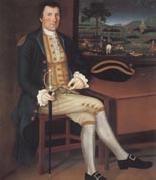 |
Chandler Winthrop
|
|
American Colonial Era Painter, 1747-1790
American painter. He was one of ten children of William Chandler, a farmer, and Jemima Bradbury Chandler of Woodstock, CT. After the death of his father in 1754 and on reaching the age for apprenticeship, Chandler pursued a career as a portrait and ornamental painter. While there is no proof of his presence in Boston, the History of Woodstock (1862) states that he studied portrait painting there. He may also have had the opportunity to view works by the major artist of the city, John Singleton Copley, as well as those of his lesser-known contemporaries, William L. Johnston and Joseph Badger. In the course of his career, Chandler worked in such diverse trades as gilding, carving and illustrating, as well as portraiture, landscape and house painting, suggesting that he received some instruction as an artisan-painter. |
|
|
|
|
|
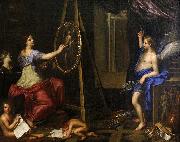 |
Charles Alphonse du Fresnoy
|
|
(1611C1665), French painter and writer on his art, was born in Paris, son of an apothecary.
He was destined for the medical profession, and well educated in Latin and Greek; but, having a natural propensity for the fine arts, he would not apply to his intended vocation, and was allowed to learn the rudiments of design under Perrier and Vouet. At the age of twenty-one he went off to Rome, with no resources; he drew ruins and architectural subjects.
After two years thus spent he re-encountered his old fellow-student Pierre Mignard, and by his aid obtained some amelioration of his professional prospects. He studied Raphael and the antique, went in 1633 to Venice, and in 1656 returned to France. During two years he was now employed in painting altar-pieces in the château du Raincy, landscapes, etc. His death was caused by an attack of apoplexy followed by palsy; he expired at Villiers-le-Bel, near Paris. He never married.
His pictorial works are few; they are correct in drawing, with something of the Caracci in design, and of Titian in colouring, but wanting fire and expression, and insufficient to keep his name in any eminent repute.
He is remembered now almost entirely as a writer rather than painter. His Latin poem, De arte graphica, was written during his Italian sojourn, and embodied his observations on the art of painting; it may be termed a critical treatise on the practice of the art, with general advice to students. The precepts are sound according to the standard of his time; the poetical merits slender enough. The Latin style is formed chiefly on Lucretius and Horace. |
|
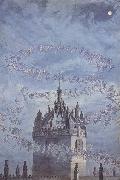 |
Charles Altamont Doyle
|
|
1832-1893
was a Victorian artist. He was the brother of the artist Richard Doyle, and the son of the artist John Doyle. Although the family was Irish, Doyle was born and raised in England. In 1849 he moved to Edinburgh where he met Mary Foley. They were married on 31 July 1855. Their children included Arthur Conan Doyle, creator of Sherlock Holmes, John Francis Innes Hay Doyle (known as Innes or Duff), and Jane Adelaide Rose Foley n??e Doyle (known as Ida). Doyle was not as successful an artist as he wished, and suffered depression and alcoholism. His paintings, which were generally of fairies, such as "A Dance Around The Moon", or similar fantasy scenes, reflected this, becoming more macabre over time. In 1881 Doyle was committed to a nursing home specialising in alcoholism. While there, his depression grew worse, and he began suffering epileptic seizures. Following a violent escape attempt he was sent to Sunnyside, Montrose Royal Lunatic Asylum, where he continued to paint. He died in Crighton Royal Institution in 1893. |
|
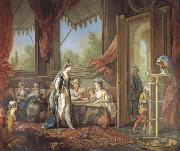 |
Charles Amedee Philippe Van Loo
|
|
French Painter, 1719-1795, was a French painter of allegorical scenes and portraits. He studied under his father, the painter Jean-Baptiste van Loo, at Turin and Rome, where in 1738 he won the Prix de Rome, then at Aix-en-Provence, before returning to Paris in 1745. He was invited to join the Academie Royale de Peinture et de Sculpture in 1747, and that year he married his cousin Marie-Marguerite Lebrun, daughter of the painter Michel Lebrun (died 1753). Among his brothers were the painters Francois van Loo (1708-1732) and Louis-Michel van Loo (1707-1771). |
|
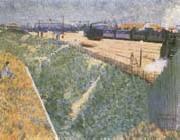 |
Charles Angrand
|
|
French Pointillist Painter, 1854-1926.French painter. He was trained at the Acad?mie de Peinture et de Dessin in Rouen, where he won prizes. Although he failed to gain entry to the Ecole des Beaux-Arts in Paris, Angrand began to win a controversial local reputation for canvases in a loosely Impressionist manner. In 1882 he secured a post as a schoolteacher at the Coll?ge Chaptal in Paris. With this security he was able to make contacts in progressive artistic circles, and in 1884 he became a founder-member of the Salon des Ind?pendants. His paintings of this period depict rural interiors and kitchen gardens, combining the broken brushwork of Monet and Camille Pissarro with the tonal structure of Bastien-Lepage (e.g. In the Garden, 1884; priv. col., see 1979 exh. cat., p. 27). |
|
|
|
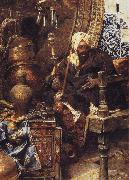 |
Charles Bargue
|
|
(c. 1826/1827?CApril 61883) was a French artist, a lithographer as well as a painter, who devised a drawing course.
Charles Bargue is mostly remembered for his Cours de dessin, one of the most influential classical drawing courses conceived in collaboration with Jean-L??on G??rôme. The course, published between 1866 and 1871 by Goupil & Cie, and composed of 197 lithographs printed as individual sheets, was to guide students from plaster casts to the study of great master drawings and finally to drawing from the living model.
Among the artists whose work is based on the study of Bargue's platework, is Vincent van Gogh who copied the complete set in 1880/1881, and (at least a part of it) again in 1890. |
|
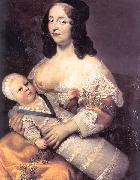 |
Charles Beaubrun
|
|
(Charles Bobrun) (1604 - 1692) was a French portrait painter active in Paris between 1630-70.
Charles Beaubrun was born at Amboise, a member of a distinguished family of painters. He studied under his uncle Louis Beaubrun (d. 1627). He and his cousin Henri Beaubrun (II) (1603 - 1677), were portrait painters in the courts of King Louis XIII and Louis XIV of France. Some of his work is jointly attributed to Henri. His youngest brother, Michel Beaubrun (d 1642), was also a painter. Charles Beaubrun died at Paris.
|
|
|
|
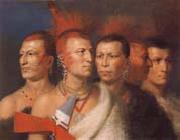 |
Charles Bird King
|
|
American Painter, 1785-1862,is a United States artist who is best known for his portraiture. In particular, the artist is notable for the portraits he painted of Native American delegates coming to Washington D.C., which were commissioned by government's Bureau of Indian Affairs. Charles Bird King was born in Newport, Rhode Island as the only child of Deborah Bird and American Revolutionary veteran Captain Zebulon King. The family traveled west, but when King was four years old, his father was killed and scalped by Native Americans near Marietta, Ohio. King and his mother moved back to Newport to live with Bird's mother. When King was fifteen, he went to New York to study under the portrait painter Edward Savage. At age twenty he moved to London to study under the famous painter Benjamin West at the esteemed Royal Academy. King returned to the U.S. due to the War of 1812 after a seven-year stay in London, and spent time working in Philadelphia, Baltimore, and Richmond. He eventually settled in Washington, due to the economic appeal that the burgeoning city offered. In the nation's new capital, the artist earned a solid reputation as a portraitist among politicians, and earned enough to maintain his own studio and gallery. King's economic success in the art world, particularly in the field of portraiture, had more to do with his ability to socialize with the wealthy celebrities, and relate to the well educated politicians of the time: His industry and simple habits enabled him to acquire a handsome competence, and his amiable and exemplary character won him many friendse . These patrons included John Quincy Adams, John Calhoun, Henry Clay, James Monroe, and Daniel Webster . |
|
|
|
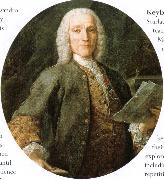 |
charles burney
|
|
Period: Classical (1750-1819)
Country: England
Born: April 07, 1726
Died: April 12, 1814 in Chelsea |
|
|
|
|
|
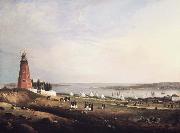 |
Charles Codman
|
|
(circa 1800-1842) was a landscape painter of Portland, Maine. His art is featured at the Portland Museum of Art as mature, fine early American landscape painting.
Codman was probably from Boston and was apprenticed to the ornamental painter, John Ritto Penniman. Codman began as a decorative painter and had no formal training but eventually produced mature works of romance and beauty. One of his more important commissions was to design and paint five fireboards (decorative panels placed over hearths during the summertime) in the landscape style, for the Portland mansion of shipbuilder James Deering. He also filled commissions for both portraiture and decorative arts. |
|
|
|
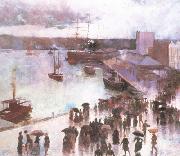 |
Charles conder
|
|
English-born Australian Painter, 1868-1909
English painter, active in Australia and France. He was sent to Australia in 1884 to learn surveying under his uncle W. J. Conder. After about two years in survey camps, he attended evening classes at the Royal Art Society, Sydney; in 1887 he worked as a lithographic draughtsman for the Illustrated Sydney News. Tom Roberts, then in Sydney on a visit from Melbourne, was among the open-air landscape painters that he knew at this time. He taught Conder some of the principles of Impressionism, such as truth to the momentary effect of light and to colour values, and the rejection of the academic ideal of high finish. The most important painting of Conder's Sydney years, the Departure of the 'SS Orient' from Circular Quay, 1888 (1888; Sydney, A.G. NSW), already showed a distinct personal style, combining humour with nostalgia and selective observation with decorative finesse of handling and design. In December 1888 Conder joined Roberts and Arthur Streeton in Melbourne. During the following summers they painted together at the outer suburbs of Mentone, Box Hill and Eaglemont |
|
|
|
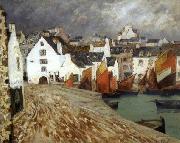 |
Charles Cottet
|
|
Charles Cottet (1863-1925), French painter, was born at Le Puy-en-Velay and died in Paris. A famed post-impressionist, Cottet is known for his dark, evocative painting of rural Brittany and seascapes. He led a school of painters known as the Bande noire or Nubians group (for the somber palette they used, in contrast to the brighter post-impressionist paintings), and was friends with such artists as Auguste Rodin.
Cottet studied at the École des Beaux-Arts, and under Puvis de Chavannes and Roll, while also attending the Academie Julian (where fellow students formed Les Nabis school of painting, with which he was later associated). He travelled and painted in Egypt, Italy, and on Lake Geneva, but he made his name with his sombre and gloomy, firmly designed, severe and impressive scenes of life on the Brittany coast.
Cottet exhibited at the Salon of 1889, but on a trip to Brittany in 1886 he had found his true calling. For the next twenty years he painted scenes of rural and harbor life, portraying a culture Parisians still found exotic. He is especially noted for his dark seascapes of Breton harbors at dawn, and evocative scenes from the lives of Breton fishermen.
He was close friends with Charles Maurin, and his group included the painter Felix-Émile-Jean Vallotton. Cottet has often been associated with the picturesque seaside symbolism of the Pont-Aven School, though Vallotton famously painted Cottet as a leader of Les Nabis, beside Pierre Bonnard, Edouard Vuillard, and Ker-Xavier Roussel, in his Five Painters (1902-3; Kunstmuseum Winterthur). Cottet was more explicitly the leader of his own small movement, the Bande noire of the 1890s, which included Lucien Simon and Andre Dauchez, all influenced by the realism and dark colours of Courbet.
|
|
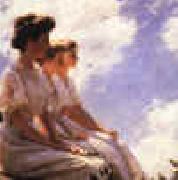 |
Charles Courtney Curran
|
|
1861-1942
Charles Courtney Curran Gallery
Curran was born in Hartford, Kentucky in 1861 and moved to Sandusky, Ohio in 1881. He studied one year at the Cincinnati School of Design, and began a brilliant career after moving to New York City in 1882 where he enrolled in the National Academy of Design. He went on to study at the Acad??mie Julian in Paris and was a student of Benjamin Constant, Jules-Joseph Lefebvre and Henri Lucien Doucet. Curran himself would become a teacher at the Pratt Institute, New York City, the Cooper Union and the National Academy. |
|
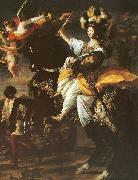 |
Charles Dauphin
|
|
Charles Claude Dauphin or Dofin, called in Italian Delfino, a French painter of historical subjects and portraits, was the son of Olivier Dauphin. He went to Turin about the year 1664, and worked there for the Prince of Carignano. He was also employed for the churches, but his works are in no great estimation, abounding as they do with the most ridiculous absurdities. In the church of San Carlo is an altar-piece by him, described by Lanzi as a most ludicrous composition. He died in 1677. |
|
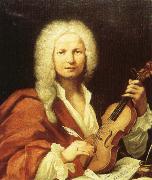 |
charles de brosses
|
|
(1709-77). President of the Parlement de Dijon, friend of the philosophes, and in Diderot's words ??une petite t??te gaie, ironique et satiriquee. His learned publications include important work on the origins of language (Traite de la formation m??canique des langues, 1765) and on primitive religion (Du culte des dieux fetiches, 1760). His Lettres familieres crites d Italie en 1739 et 1740, published posthumously in 1799 and much loved by Stendhal, offer a model of personal travel writing, in which detailed accounts of art works and monuments, not always complimentary, or a careful description of Vesuvius, addressed to Buffon, are interspersed with sprightly, enthusiastic accounts of the peculiarities and the aesthetic and sensual pleasures of life in Italy.
|
|
|
|
 |
Charles de La Fosse
|
|
(June 16, 1636 - December 13, 1716), French painter, was born in Paris.
He was one of the most noted and least servile pupils of Le Brun, under whose direction he shared in the chief of the great decorative works undertaken in the reign of Louis XIV. Leaving France in 1662, he spent two years in Rome and three in Venice. The influence of his prolonged studies of Veronese is evident in his "Finding of Moses" (Louvre), an in his "Rape of Proserpine" (Louvre), which he presented to the Royal Academy as his diploma picture in 1673. He was at once named assistant professor, and in 1674 the full responsibilities of the office devolved on him, but his engagements did not prevent his accepting in 1689 the invitation of Lord Montagu to decorate Montagu House.
He visited London twice, remaining on the second occasionetogether with Rousseau and Monnoyer more than two years. William III vainly strove to detain him in England by the proposal that he should decorate Hampton Court, for Le Brun was dead, and Mansart pressed La Fosse to return to Paris to take in hand the cupola of Les Invalides. The decorations of Montagu House are destroyed, those of Versailles are restored, and the dome of the Invalides (engraved, Picart and Cochin) is now the only work existing which gives a full measure of his talent. During his latter years La Fosse executed many other important decorations in public buildings and private houses, notably in that of Crozat, under whose roof he died on 13 December 1716.
This article incorporates text from a publication now in the public domain: Chisholm, Hugh, ed (1911). Encyclopædia Britannica (11th ed.). Cambridge University Press.
|
|
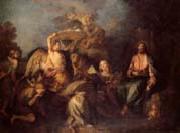 |
Charles de Lafosse
|
|
French Baroque Era Painter ,
Paris 1636/40 -1716
French painter and draughtsman. He was the most important decorative painter in France in the generation after Charles Le Brun and in this capacity contributed to many of the major official and private building projects from the 1670s to the 1710s, including the D?me des Invalides in Paris and the chapel at the ch?teau of Versailles. His colourist's temperament, his early study of the Venetian painters of the 16th century and his interest in the work of Peter Paul Rubens contributed to the triumph of the party that championed colour over line and put him in the vanguard of the new tendency in French painting in the later 17th century. His work, with its rich and changing colours, combines the strength of the 17th century with the lightness and grace of the 18th |
|
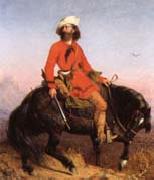 |
Charles Deas
|
|
1818-1867,American painter. After an unsuccessful attempt to obtain an appointment at West Point Military Academy, he turned to an artistic career. He quickly earned recognition at the annual exhibitions of the National Academy of Design, New York, to which he was elected an associate member in 1839, with subjects taken from James Fenimore Cooper, such as the Turkey Shoot (c. 1837; Richmond, VA Mus. F.A.), and from Washington Irving, The Devil and Tom Walker (1838; Richard P. W. Williams priv. col.). |
|
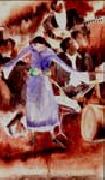 |
Charles Demuth
|
|
(November 8, 1883 - October 23, 1935) was an American watercolorist who turned to oils late in his career, developing a style of painting known as Precisionism.
"Search the history of American art," wrote Ken Johnson in the New York Times, "and you will discover few watercolors more beautiful than those of Charles Demuth. Combining exacting botanical observation and loosely Cubist abstraction, his watercolors of flowers, fruit and vegetables have a magical liveliness and an almost shocking sensuousness."
Demuth was a lifelong resident of Lancaster, Pennsylvania. The home he shared with his mother is now a museum of his work. He graduated from Franklin & Marshall Academy before studying at Drexel University and at Philadelphia's Pennsylvania Academy of Fine Arts. |
|
 |
Charles Dixon
|
|
1872-1934. English painter, born in Goring-on-Thames in Oxfordshire on 8 December 1872 |
|
|
|
|
|
|

